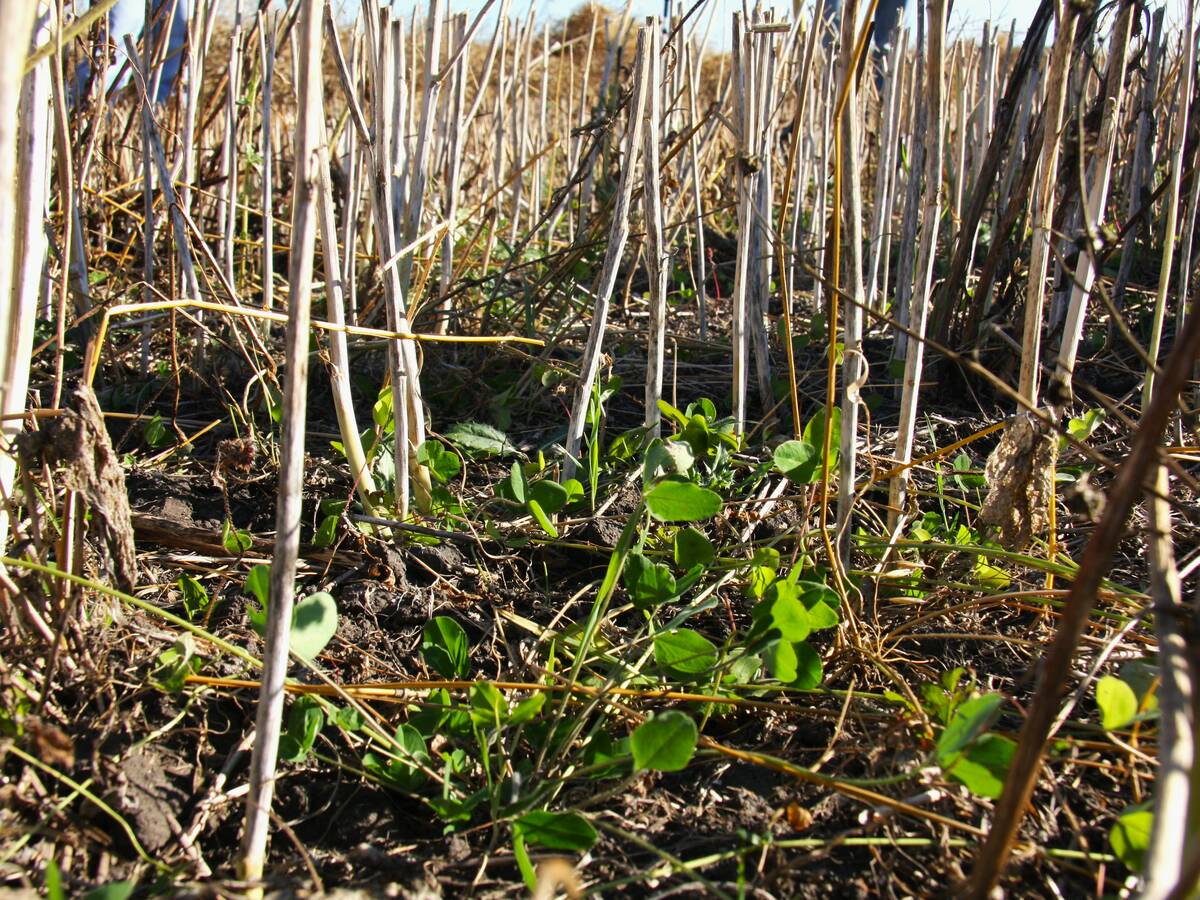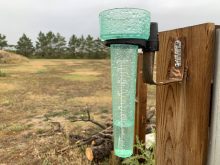Piles of grain left along Highway 5 in British Columbia have Warren Chayer perplexed and frustrated.
“We’ve got a problem here to a certain degree of grain trucks dumping grain. I’m kind of at my wit’s end to have these grain piles all over the place and bears feeding on them and then bears having to get put down,” said the B.C. conservation officer for the Thompson Fraser Zone based in Clearwater.
Over the past eight years, he said, varying amounts of grain have been found at southbound roadside pull-outs on Highway 5 between Valemount and Avola.
Read Also

Saskatchewan project sees intercrop, cover crop benefit
An Indigenous-led Living Lab has been researching regenerative techniques is encouraging producers to consider incorporating intercrops and cover crops with their rotations.
“It will almost be like a little rash of problems. You won’t have much and then all of a sudden the highways guys will let me know, ‘hey, there’s a pile over here, there’s a pile over here, there’s a pile over here,’ ” he said.
“Sometimes we’re talking 20 pounds, 30 lb. up to the last pile of wheat I had to deal with was 12 feet by 10 feet by about two feet high. We’re talking some pretty good amounts here.”
Fresh and fermenting grain attracts wildlife, particularly bears who at this time of year are awake after hibernation and hungry.
He only knows of black bears feeding on the grain, but grizzly bears also inhabit the mountainous and forested region.
The bears are attracted by the smell and taste of grain and quickly become accustomed to it, which creates numerous safety issues for them and drivers along the four-lane blacktop.
“It’s (grain) up and down the highway and that’s the problem. Number one is it creates the public safety issue of bears becoming habituated. Already this year, we’ve had to put down a bear because it was habituated,” he said.
Bears feeding on grain also pose a potential safety issue for humans and bears, particularly at night.
“You’ve got a bear feeding on a pile of grain that people can’t see. They could unwillingly be stepping into the bear’s dinner plate,” he said.
Several bears have also been killed and injured by motor vehicles as they cross the highway to feed on the grain.
Besides wheat, he’s found dumped barley, oats, lentils and peas.
“For example, I went through the area at all the pull-outs last weekend in working on this issue and at three of the locations there was fairly observable amounts of grains and lentils,” he said.
Chayer can only speculate about why the grain and pulses are being dumped.
“This is just my own hypothesis. Truckers check their weight at the unmanned scale in probably Tete Jaune Cache and then realize that they are maybe a little bit overloaded and they dump some on the ground because they know that the commercial weigh scales down in Kamloops, which are (open) 24-7, 365 days a year, they’re going to get stopped there,” he said.
“I called a trucking company in Alberta and they kind of figured that’s probably what’s happening as well.”
If a commercial vehicle’s cargo is over the legal weight limit, the driver can face significant fines. It varies depending on how overweight the load is, but can be as much as $1 per pound.
He said it’s clear the product is coming from the Prairies and grain trucks are not being adequately managed.
Reg Ens, executive director of the B.C. Agriculture Council, agreed.
“It doesn’t make any sense and it sounds like it’s actually poor management, quite frankly,” he said.
Highway 5 is a core route of Canada’s national highway system. It connects the southern Trans-Canada route (Highway 1) with the northern Trans-Canada/Yellowhead route (Highway 16), providing the shortest land connection between Vancouver and Edmonton.
For several years, Ens said Highway 5 has been a well-used route for grain haulers because oil was taking up much of the available rail capacity.
He said a number of feed mills in B.C.’s lower mainland could not get adequate grain delivered by rail and turned to trucking to meet demand.
“That would have been two or three years ago there was big problems getting grain to the coast here, both on export and on domestic. At that point, a number of the feed mills went to trucking a proportion of their needs to the coast. As far as I’m aware, they’re continuing to do that,” he said.
Arlynn Kurtz of Stockholm, Sask., said it’s probably a case of the truck being overloaded at pickup and then lightened en route.
The retired farmer has first-hand experience with a load of wheat.
“They overloaded in my yard and pulled out. How I caught the guy was when he stopped to open the chute to let grain dribble out. There was a small pile and you could follow the trail all the way down the road until he stopped 13 kilometres later and shut the chute,” he said.
“In my case, we figured two tonnes were taken off. Two tonnes is about 80 bushels at $6 a bushel, which is $480.”
Kurtz confronted the driver and trucking company and recouped his losses, but he learned during the process that it’s common practice for some drivers to lighten their load by dumping.
“I believe that because the trucking companies will tell the driver if you’re overloaded and get caught, you pay the fine,” he said.
“The farmer is no wiser and pays the price and the environment pays the price.”
According to B.C.’s Ministry of Transportation and Infrastructure, there are few reports of grain spillage on the province’s highways.
“This is a violation our commercial vehicle safety and enforcement officers watch out for. However, they have found it to be a rare occurrence on our highways,” it said in a statement
“If there is debris or garbage in our pull-outs and/or rest areas, our maintenance contractors have requirements in their contracts to clean and remove the debris.”
The ministry said drivers involved in spilling grain from a load can face violation penalties.
The basic offence in the Motor Vehicle Act is: “Driver operates commercial or business vehicle without proper equipment or with insecure cargo. Note that intent is not weighed in this violation. If the load bounces, falls or blows off, it actively violates the regulation.”
The fine for an insecure load is $288, and $460 if the load has escaped.
There are also several fines under the province’s Wildlife Act contraventions for intentionally attracting wildlife as well as potential charges under the Environmental Management Act for introducing business waste into the environment.
Since 2014, Chayer said, about seven incidents of this type have been reported to the Conservation Officer Service.
The RCMP has also taken complaints and is believed to be investigating, but no charges or fines have been issued.
However, the mystery continues over who is responsible.
“Given the remoteness of the area and lack of witnesses, these files have not been solved. In addition, there certainly are several more incidents of smaller quantities of grains, peas, lentils that have not been reported or generated a case file,” he said.
Anyone with information regarding illegal grain dumping is asked to report it to any of the following agencies:
- Central Interior Traffic Services — Clearwater at 250-674-2237
- B.C. Conservation Officer Service at 877-952-7277
- Commercial Vehicle and Safety Enforcement at 888-775-8785
- Crimestoppers at 800-222-8477.
















